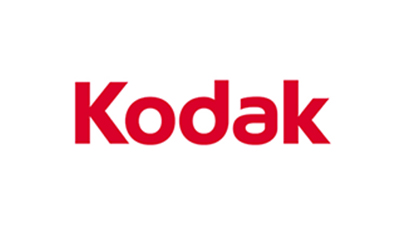
-
Report ID 138090 -
Published Date June 2023 -
Delivery Format PDF/PPT/Word -
Editor's Rating
-
Report Details
Market Overview
The Generative AI in Supply Chain Market is expected to experience substantial growth, reaching a value of approximately USD 10,284 million by 2032. This growth will be driven by a robust compound annual growth rate (CAGR) of 45.3% during the forecast period of 2023 to 2032, starting from a market size of USD 269 million in 2022. The market is being driven by the increasing demand for real-time visibility, improved decision-making, and reduced costs.Key Takeaways
- The market is expected to be dominated by the retail sector, followed by manufacturing and healthcare.
- The largest market for generative AI in supply chain is North America, followed by Europe and Asia Pacific.
- The fastest-growing market is Asia Pacific, followed by Europe and North America.
- Generative AI is expected to play a larger role in the supply chain market in the future by improving visibility, decision-making and costs.
Note – The number might vary in the actual report
Market Demand and Trend
The demand for generative AI in the supply chain market is driven by the following factors:
- Increasing demand for real-time visibility
- Improved decision-making
- Reduced costs
- Growing adoption of cloud computing
- Increasing demand for personalized customer experience
Largest Market and Fastest Growing Market
The largest market for generative AI in supply chain is North America, followed by Europe and Asia Pacific. The largest market is due to the presence of a large number of market players, high adoption of advanced technologies, and the increasing demand for real-time visibility. The fastest growing market is Asia Pacific, due to the growing adoption of cloud computing, increasing demand for personalized customer experience, and rising investments in the supply chain industry.
Play a Larger Role in
Generative AI is expected to play a larger role in the supply chain market in the future by improving the following:
- Visibility: Generative AI can be used to create real-time visibility of the supply chain, which can help businesses to identify potential problems and take corrective action.
- Decision-making: Generative AI can be used to make data-driven decisions, which can help businesses to improve efficiency and profitability.
- Costs: Generative AI can be used to reduce costs by automating tasks and improving efficiency.
Current Trends in the Market
The following are some of the current trends in generative AI in supply chain market:
- Increased adoption of cloud computing: Cloud computing is enabling businesses to adopt generative AI solutions more easily and cost-effectively.
- Growing demand for personalized customer experience: Businesses are using generative AI to personalize the customer experience by providing customized recommendations and offers.
- Rising investments in the supply chain industry: Businesses are investing in generative AI solutions to improve efficiency, profitability, and customer experience.
5 Predictions about the Future
The following are 5 predictions about the future of generative AI in the supply chain market:
- Generative AI will be used to create more accurate demand forecasts.
- Generative AI will be used to optimize inventory levels.
- Generative AI will be used to improve transportation planning.
- Generative AI will be used to reduce waste.
- Generative AI will be used to improve customer service.
Technological Advancements
The following are some of the technological advancements that are driving the growth of the generative AI in supply chain market:
- Development of new machine learning algorithms: New machine learning algorithms are being developed that are more powerful and efficient than previous algorithms.
- Increased availability of data: The availability of data is increasing due to the rise of the internet of things (IoT) and big data.
- Improved computing power: Computing power is improving, which is making it possible to train and run more complex machine learning models.
Increasing Demand in Developing Countries
The demand for generative AI in developing countries is increasing due to the following factors:
- Growing adoption of technology: Developing countries are adopting technology at a faster pace than developed countries.
- Increasing investment in infrastructure: Developing countries are investing in infrastructure, such as roads, railways, and airports.
- Growing population: The population of developing countries is growing, which is increasing the demand for goods and services.
Market Dynamics
Drivers
The following are some of the drivers of generative AI in supply chain market:
- Growing demand for real-time visibility: Businesses are demanding real-time visibility of their supply chains to improve efficiency and profitability.
- Need to improve decision-making: Businesses need to improve their decision-making to stay ahead of the competition.
- Rising costs: Businesses are looking for ways to reduce costs without compromising on efficiency or quality.
Restraints
- High cost of implementation: Generative AI solutions can be expensive to implement.
- Lack of skilled talent: There is a lack of skilled talent in the market who can implement and use generative AI solutions.
- Data privacy and security concerns: There are concerns about data privacy and security when using generative AI solutions.
Opportunities
The following are some of the opportunities in the generative AI in supply chain market:
- Growing demand for personalized customer experience: Businesses are looking for ways to provide personalized customer experiences to their customers.
- Rising adoption of cloud computing: Cloud computing is enabling businesses to adopt generative AI solutions more easily and cost-effectively.
- Rising investments in the supply chain industry: Businesses are investing in generative AI solutions to improve efficiency, profitability, and customer experience.
Challenges
The following are some of the challenges in the generative AI in supply chain market:
- Lack of standardization: There is no standard for generative AI solutions, which can make it difficult for businesses to choose the right solution.
- Complexity: Generative AI solutions can be complex to implement and use.
- Data quality: The quality of data is critical for generative AI solutions to work effectively.
Key Players
- IBM Corporation
- Microsoft Corporation
- SAP SE
- Oracle Corporation
- Blue Yonder
- LLamasoft Inc
- AIMMS
- Other Key Players
Recent Developments
The following are some of the recent developments in the generative AI in supply chain market:
- Amazon Web Services (AWS) launched a new service called Amazon Forecast, which uses machine learning to create accurate demand forecasts.
- Google Cloud Platform (GCP) launched a new service called Cloud AutoML Tables, which helps businesses build machine learning models without writing any code.
- Microsoft Azure launched a new service called Azure Machine Learning, which provides businesses with a platform to build, train, and deploy machine learning models.
Market Segmentation
Based on Component
- Solutions
- Software
Based on Deployment Mode
- Cloud-based
- On-Premise
Based on End-User
- Retail
- Manufacturing
- Healthcare
- Other End-Users
Key Regions
- North America
- The US
- Canada
- Mexico
- Western Europe
- Germany
- France
- The UK
- Spain
- Italy
- Portugal
- Ireland
- Austria
- Switzerland
- Benelux
- Nordic
- Rest of Western Europe
- Eastern Europe
- Russia
- Poland
- The Czech Republic
- Greece
- Rest of Eastern Europe
- APAC
- China
- Japan
- South Korea
- India
- Australia & New Zealand
- Indonesia
- Malaysia
- Philippines
- Singapore
- Thailand
- Vietnam
- Rest of APAC
- Latin America
- Brazil
- Colombia
- Chile
- Argentina
- Costa Rica
- Rest of Latin America
- Middle East & Africa
- Algeria
- Egypt
- Israel
- Kuwait
- Nigeria
- Saudi Arabia
- South Africa
- Turkey
- United Arab Emirates
- Rest of MEA
FAQs
1. How does generative AI work?
Generative AI works by using machine learning algorithms to learn from existing data and then using that knowledge to generate new data that is similar to the original data. The machine learning algorithms are trained on a large dataset of data, such as historical demand data, inventory data, and transportation data. Once the machine learning algorithms are trained, they can be used to generate new data, such as demand forecasts, inventory levels, and transportation routes.
2. What are the challenges of using generative AI in the supply chain?
There are a number of challenges associated with using generative AI in the supply chain, including:
- Data quality: The quality of the data used to train the machine learning algorithms is critical to the accuracy of the models. This data must be carefully curated to ensure that it is accurate and representative of the population that the model will be used to generate data for.
- Model complexity: Generative AI models can be complex to build and train. This can be a challenge for businesses that do not have the resources to build and train their own models.
- Model interpretability: It can be difficult to understand how generative AI models work. This can be a challenge for businesses that need to understand how the models are making decisions.
3. What are the future trends for generative AI in the supply chain?
The future trends for generative AI in the supply chain include:
- Increased adoption: Generative AI is expected to be adopted by more businesses in the supply chain in the future. This is due to the increasing availability of data, the development of more powerful machine learning algorithms, and the decreasing cost of computing power.
- New applications: Generative AI is expected to be used for new applications in the supply chain in the future. This includes applications such as demand forecasting, inventory management, transportation planning, and risk management.
- Improved collaboration: Generative AI is expected to improve collaboration between businesses in the supply chain. This is due to the ability of generative AI to generate new data that can be shared between businesses.
-
Table Of Content
Research Insights & Deliverables
 Development and Future Forecast
Development and Future Forecast Competitive benchmarking
Competitive benchmarking Company Revenue Statistics
Company Revenue Statistics Rising Regional Opportunities
Rising Regional Opportunities Technology Trends and Dynamics
Technology Trends and Dynamics Technology Assessment
Technology Assessment
-
Inquiry Before Buying
Research Insights & Deliverables
 Development and Future Forecast
Development and Future Forecast Competitive benchmarking
Competitive benchmarking Company Revenue Statistics
Company Revenue Statistics Rising Regional Opportunities
Rising Regional Opportunities Technology Trends and Dynamics
Technology Trends and Dynamics Technology Assessment
Technology Assessment
-
Request Sample
Research Insights & Deliverables
 Development and Future Forecast
Development and Future Forecast Competitive benchmarking
Competitive benchmarking Company Revenue Statistics
Company Revenue Statistics Rising Regional Opportunities
Rising Regional Opportunities Technology Trends and Dynamics
Technology Trends and Dynamics Technology Assessment
Technology Assessment














